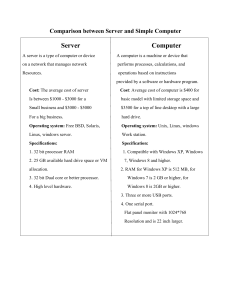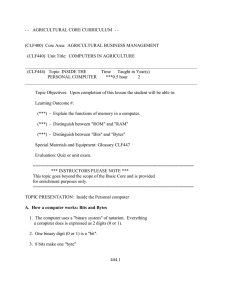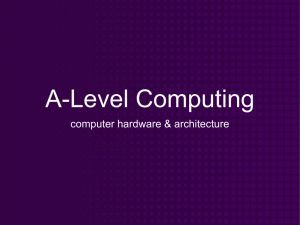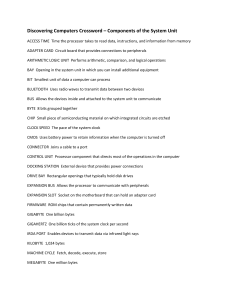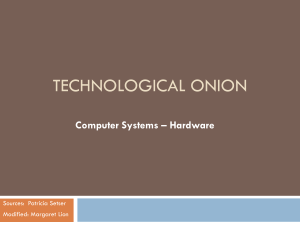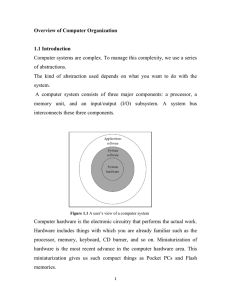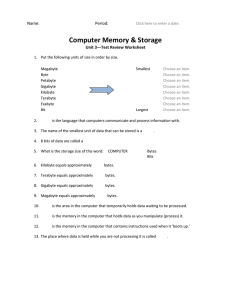Computer terms C
advertisement
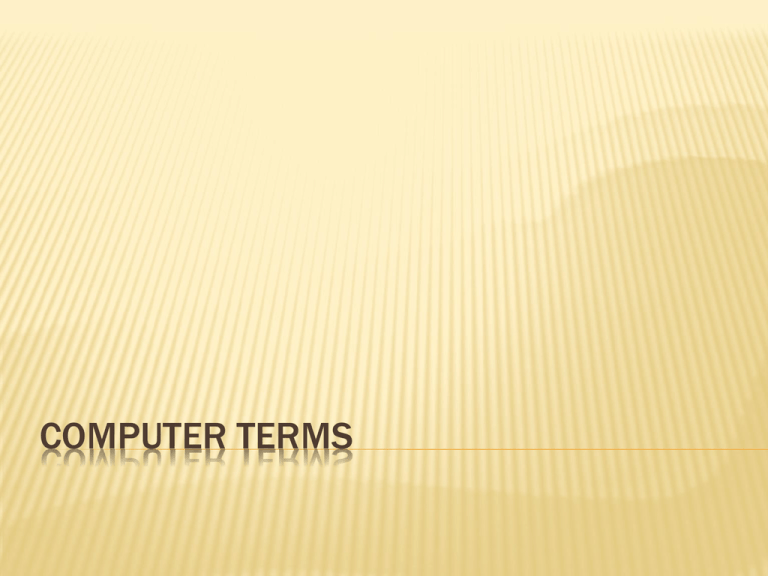
COMPUTER TERMS
PROCESSOR
The central processing unit (CPU) interprets
and executes instructions.
The “brains” of the computer.
The speed of the processor is how fast it can
carry out instructions.
Generally
higher numbers are better.
Measured in hertz (Hz)
BIT
The word bit is a shortening of the words
"Binary digIT." Bits have only two possible
values: 0 and 1. You can also think of a bit as
a switch; it is either on (1) or off (0). A bit is the
foundation for storing digital information.
BYTE
Short for “Binary Term”
Equal to 8 bits.
Kilobyte
(KB) = 1,024 bytes {Kilo = 1 thousand}
Megabyte (MB) = 1,048,576 bytes {Mega = 1
million}
Gigabyte (GB) = 1,073,741,824 bytes {Giga = 1
billion}
Terabyte (TB) = 1,099,511,627,776 bytes {Tera = 1
trillion}
FLASH DRIVE
A storage device usually plugged into a USB
port.
HARD DRIVE
Component for storing programs, photos, video,
music and other electronic information.
The capacity (size) of your hard drive is how
much information it can store (GB, TB).
RAM
RAM is short for Random Access Memory.
The memory used to run programs.
Greater amounts of RAM improve speed and
multitasking.
May
be increased (expandable) through additional
equipment.
KEYBOARD
A device that translates what is typed
(numbers, letters, etc.) into a language that the
computer understands (0’s and 1’s).
DISPLAY TYPE
A display is an output device for your computer
that shows text and graphics.
Types:
Liquid Crystal Display (LCD)
Most
energy efficient
Light Emitting Diode (LED)
Very
energy efficient
OTHER CONTROL DEVICE (MOUSE)
An input device for a computer that senses
motion and translates that motion to an icon on
the display.
The icon representing the motion of the mouse
is called a cursor.
USB
USB stands for Universal Serial Bus
A USB connection allows you to connect
another device (such as a printer, camera,
speaker, etc.) to a computer
TOWER
A computer case that houses most of the
components (parts) that make up a computer
